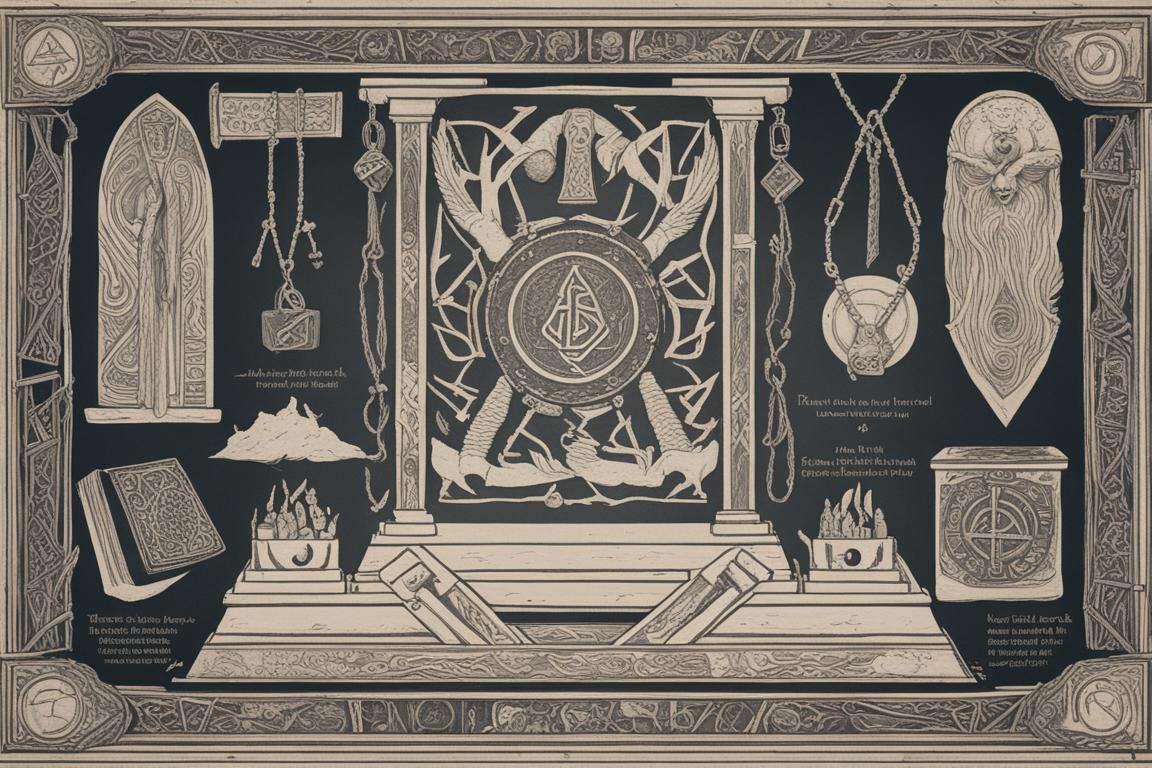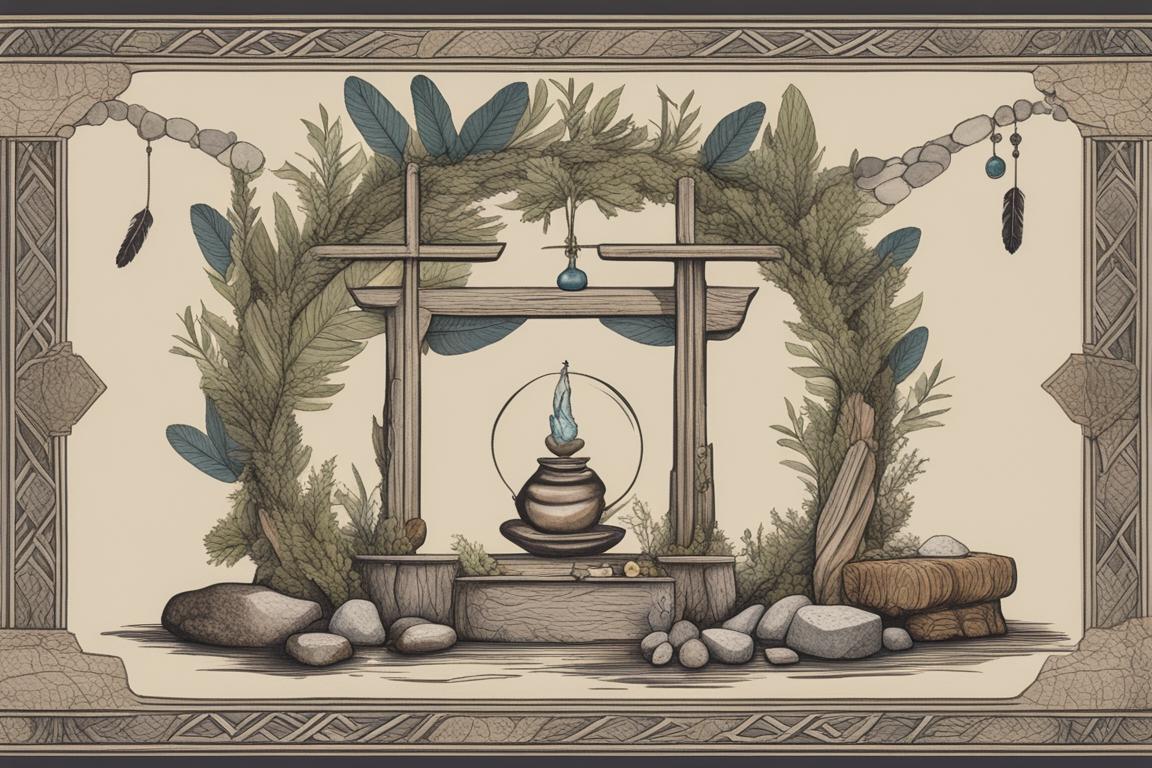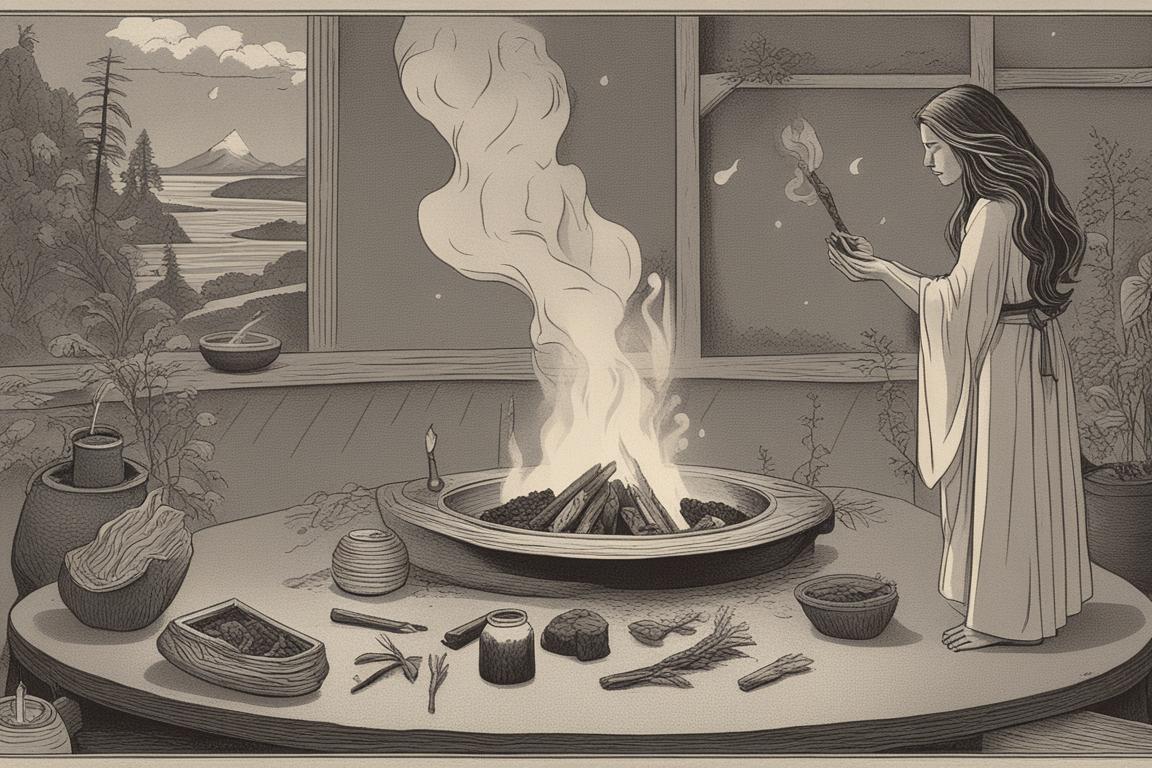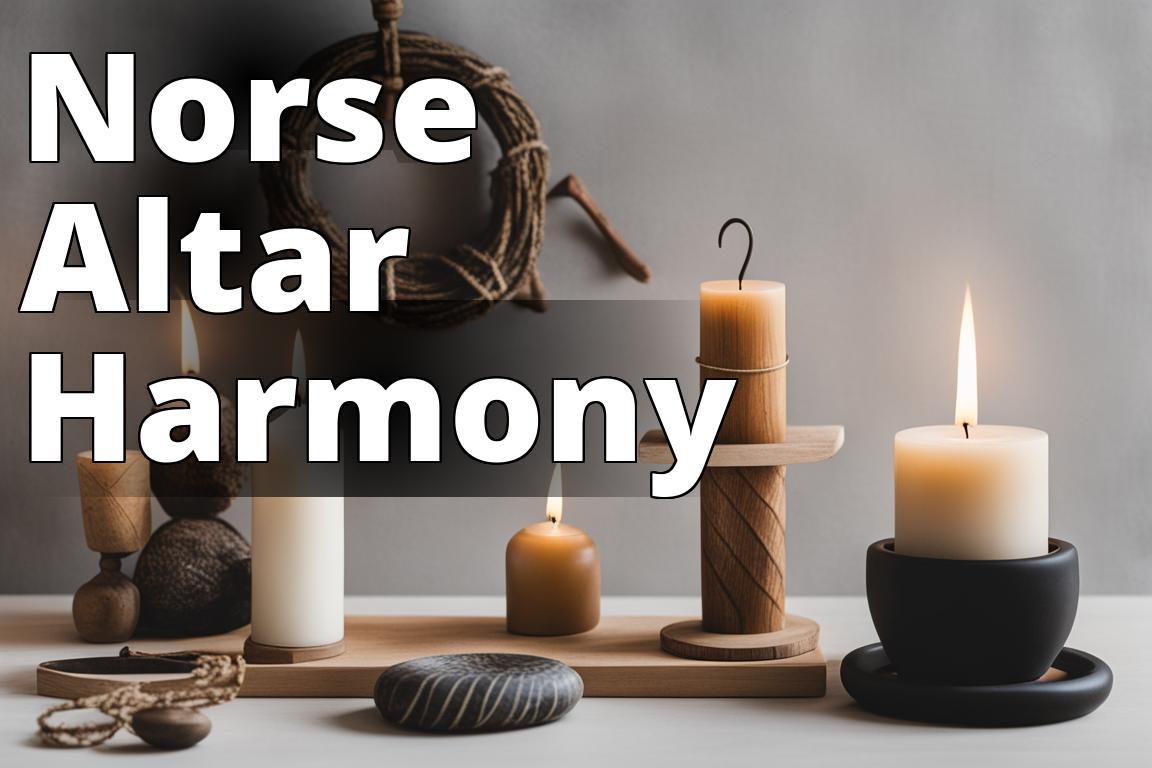Learn to Design Norse Altars in Small Spaces
- Importance and significance of creating dedicated areas for Norse rituals and spells in limited spaces.
- Tips on selecting ideal locations, designing compact altars, setting intentions, and maintaining sacred spaces.
- Guidance on incorporating symbolic items, cleansing practices, altar tools, and community engagement in small sanctuaries.
In the realm of spirituality, the creation of sacred spaces holds a profound significance. These spaces, whether in the form of altars or sanctuaries, serve as focal points for rituals, meditation, and connection with the divine. Particularly in Norse traditions, the establishment of dedicated areas for honoring deities, performing spells, and engaging in spiritual practices is paramount. Despite the constraints of small living spaces, the art of crafting altars and sanctuaries remains a tangible and essential practice for those seeking to deepen their spiritual connections.
Choosing the Perfect Location
When delving into the creation of sacred spaces within limited areas, selecting the right location is crucial. In Norse practices, privacy, natural light, tranquility, and efficient space utilization play key roles in determining the ideal spot for setting up altars and sanctuaries. Whether it’s a corner of a room, a small table, or a shelf, the chosen location should evoke a sense of reverence and provide a quiet retreat for spiritual activities.
Privacy and Tranquility
| Criteria | Importance | Considerations |
|---|---|---|
| Privacy | High | Ensure uninterrupted focus during rituals and meditation. |
| Natural Light | High | Symbolizes divine presence and illuminates the sacred space. |
| Tranquility | High | Fosters a peaceful atmosphere conducive to spiritual practices. |
| Efficient Space Utilization | High | Optimize space through minimalistic furniture and decluttering. |
| Reverence | High | The chosen location should evoke a sense of reverence and sacredness. |
| Integration of Nature | Medium | Including natural elements like stones or branches connects with earth-centered beliefs. |
| Flexibility | Medium | Utilize adaptable furniture like shelves or wall-mounted displays for versatile altar arrangements. |
| Symbolism | High | Incorporate Norse symbols, deities, and cultural elements for authenticity and spiritual significance. |
| Energy Flow | Medium | Maximize energy flow within the space by decluttering and arranging items strategically. |
| Personal Connection | High | Personalize the space with meaningful objects, dedications to deities, and intentions for rituals. |
Privacy ensures uninterrupted focus during rituals and meditation, while tranquility fosters a peaceful atmosphere conducive to spiritual practices.
Natural Light and Optimized Space
Natural light not only illuminates the sacred space but also symbolizes divine presence. Optimizing space through minimalistic furniture and decluttering enhances the energy flow within the area.

Altar Design in Small Spaces
Designing altars and sanctuaries in limited spaces requires creativity and intentionality. In Norse traditions, incorporating elements like wooden carvings, furs, and symbols of the gods is common. Utilizing compact furniture such as small tables, shelves, or even wall-mounted displays can effectively accommodate these design elements while maximizing space efficiency.
Symbolic Items and Norse Traditions
Integrating symbolic items like Thor’s hammer (Mjölnir), runes, and images of revered Norse deities infuses the space with spiritual significance and cultural authenticity.

Natural Elements and Compact Arrangements
Including natural elements such as stones, branches, or animal motifs in the altar design brings the essence of nature indoors, connecting practitioners with the earth-centered beliefs of Norse spirituality.
Real-Life Example: Finding Serenity in a Studio Apartment
Meet Sarah’s Journey
Sarah, a busy college student living in a tiny studio apartment in the heart of the city, found solace in creating a sacred space inspired by Norse traditions. Despite the limited square footage, she dedicated a corner of her room to an altar honoring the Norse goddess Frigg.
Crafting the Perfect Altar
Using a small wooden shelf, Sarah adorned the space with symbols of motherhood and protection, such as a small statue of Frigg and a collection of white candles. She personalized the altar with a handcrafted bindrune representing harmony and wisdom.
Nurturing the Sacred Space
Sarah’s daily ritual of lighting the candles and offering a few quiet moments of reflection brought a sense of calm and connection to her hectic urban lifestyle. The carefully curated altar became a sanctuary where she could recharge and focus on her studies.
Sharing the Journey
Through online forums dedicated to Norse spirituality, Sarah connected with like-minded individuals who shared their own experiences of creating sacred spaces in limited environments. The exchange of ideas and support from the community enriched Sarah’s spiritual practice and inspired her to continue growing her sacred space in her cozy studio apartment.
Personalization and Setting Intentions
Personalizing the sacred space with meaningful objects and setting clear intentions is fundamental to the practice of Norse rituals and spells. Infusing the space with personal relics, dedications to specific deities, or intentions for magical workings imbues it with a unique spiritual resonance.
Dedication to Norse Deities
Devoting sections of the altar to specific Norse deities like Odin, Freyja, or Loki establishes a direct connection with the divine forces that practitioners seek to invoke in their spiritual endeavors.
Ritual Intentions and Spellwork
Clarifying intentions for rituals, spells, or meditations within the confined space empowers the practitioner’s focus and aligns the energy of the sacred area with their spiritual goals.

Cleansing and Energizing Practices
Maintaining the purity and alignment of the sacred space is essential for sustaining its spiritual potency. Cleansing and energizing practices ensure that the altar or sanctuary remains a sacred and harmonious environment for spiritual activities.
Step-by-Step Cleansing Rituals
Performing rituals such as smudging with herbs like sage, sprinkling salt, or using consecrated water purifies the space from negative energies and influences.

Empowering the Sacred Space
Energetically empowering the area through visualization, sound vibrations, or the placement of charged crystals enhances the vibrational frequency of the space, fostering a spiritually uplifting ambiance.
Continue reading here for tips on selecting an ideal spot in small spaces for setting up a sacred area.
FAQ
Who can benefit from creating altars in small spaces?
Anyone practicing Norse rituals can benefit from sacred altars.
What are some key elements to include in a Norse altar?
Items like runes, Thor’s hammer, and images of Norse gods.
How can one optimize a small space for a sacred altar?
Use vertical storage, multi-purpose furniture, and sacred symbols.
What if I don’t have much space for a sacred altar?
Even a small corner can be transformed into a sacred space.
How can I ensure my altar aligns with Norse traditions?
Research Norse symbolism and incorporate elements accordingly.
What if I live with people who don’t understand my practices?
Communicate respectfully and set boundaries for your sacred space.
